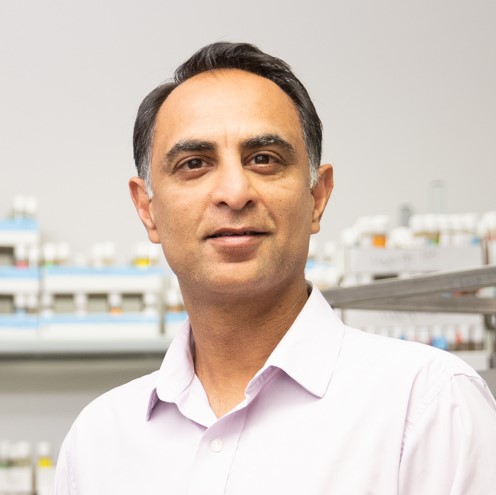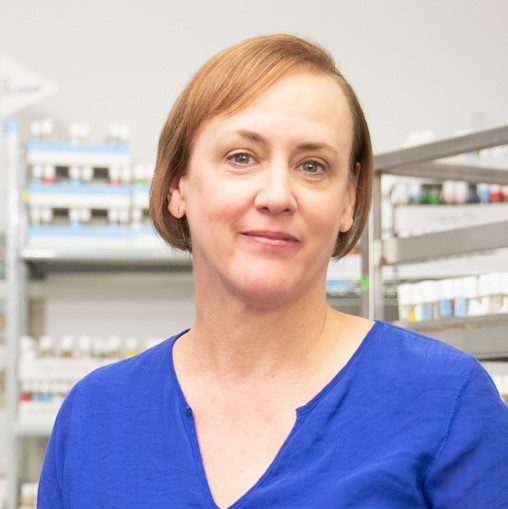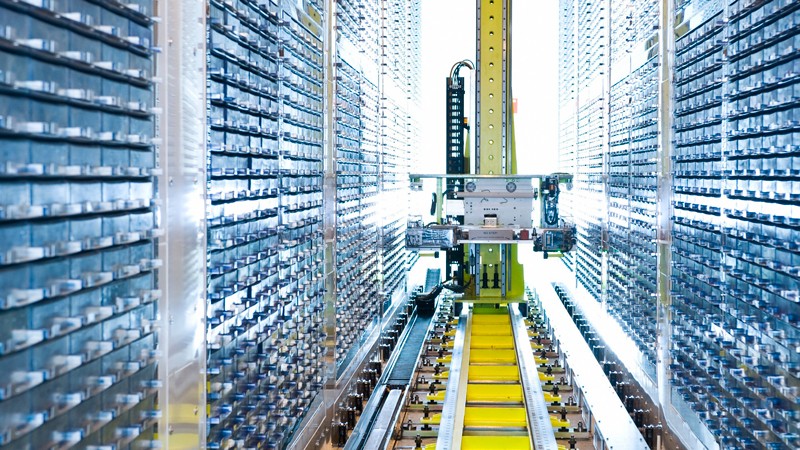by Buck Institute
April 14, 2025 . BLOG
Buck Researchers Have a Fascinating Power Tool in Their Toolbox
UK Biobank provides a resource to study humans on a huge scale
It’s a scientist’s dream: a database that contains enormous amounts of genetic information on hundreds of thousands of people, plus biological and clinical data, and thousands of characteristics measured from those same people, all freely available to approved researchers worldwide.
Such a remarkable tool exists in the UK Biobank, and Buck researchers are taking advantage of it to explore all kinds of questions about what affects human health and aging.
Launched in 2006, UK Biobank is a secure cloud-based platform that consists of de-identified biological and medical data from 500,000 United Kingdom residents between 40 and 69 years old. Participants provided blood, urine and saliva samples, which were analyzed to generate genomic sequence data along with hormone levels as well as the levels of thousands of proteins and metabolic molecules in blood. Also included is detailed information about the participants’ lifestyles and other social drivers of health, all of which are linked to their subsequent healthcare records over more than a decade.
Altogether there are more than 3,000 measured characteristics from height and eye color to mental wellbeing and social interactions to sleep and time spent watching television. The database curators also stay at the forefront of population studies by incorporating the latest technological advances, including genome-wide association studies (GWAS) and imaging data, such as MRIs, of participants.
 “UK Biobank allows us to make unprecedented connections,” says Buck Professor Pankaj Kapahi, PhD, who has used the resource in several projects. “With 3,000 traits available, we can connect those with aging or whatever we want, to generate a map of all the different things that influence each other.”
“UK Biobank allows us to make unprecedented connections,” says Buck Professor Pankaj Kapahi, PhD, who has used the resource in several projects. “With 3,000 traits available, we can connect those with aging or whatever we want, to generate a map of all the different things that influence each other.”
Kapahi used UK Biobank for a study last year about using retinal scans to predict aging . His team used more than 500,000 eye images to see if aging could be predicted from them. “With all this data, I found that not only can we predict a person’s biological age, but it looks like those with accelerated eye aging are more likely to die,” he says. His team then searched for what drives changes in retinal eye age and found a number of gene candidates, which they are currently exploring in a fruit fly model.
“In my lab, we work on flies, but UK Biobank allows labs like ours to ask questions and uncover connections about how this works with humans,” says Kapahi. “Having such an enormous amount of information at our fingertips increases excitement for what is going on and takes my work beyond just fly research.”
 Earlier this year Kapahi collaborated on a study with other Buck researchers about the contributions of loneliness, social isolation, and neuroticism to Alzheimer’s disease risk. That work used data from UK Biobank to explore which of the people with a diagnosis of Alzheimer’s disease or mild cognitive impairment also experienced depression, then investigate if there are genes or characteristics that this group shares. “Why is it that not everyone who has Alzheimer’s disease has depression and vice versa? We want to know what makes people susceptible,” says Buck Professor Julie Andersen, PhD, who collaborated on the study. The team found that reducing loneliness and social isolation may play a causal role in decreasing the risk of Alzheimer’s disease.
Earlier this year Kapahi collaborated on a study with other Buck researchers about the contributions of loneliness, social isolation, and neuroticism to Alzheimer’s disease risk. That work used data from UK Biobank to explore which of the people with a diagnosis of Alzheimer’s disease or mild cognitive impairment also experienced depression, then investigate if there are genes or characteristics that this group shares. “Why is it that not everyone who has Alzheimer’s disease has depression and vice versa? We want to know what makes people susceptible,” says Buck Professor Julie Andersen, PhD, who collaborated on the study. The team found that reducing loneliness and social isolation may play a causal role in decreasing the risk of Alzheimer’s disease.
“Especially now with machine-learning rather than us looking at data, the computer is so much faster to sort out the connections,” says Andersen who is using the resource in an effort to understand the exposome. “UK Biobank is the best data resource for this kind of study,” she says. “We can study all kinds of environmental and social impacts through the ongoing data collection they have.”
 Buck Assistant Professor John Newman, MD, PhD is also mining the data from UK Biobank to answer questions about how ketone bodies interact with health. Ketone bodies are made by the body to provide energy during fasting. But whether they have any real influence on health across the lifespan is unknown. “There are strong hints from both mouse studies and human studies of dementia and heart failure that ketones might be a way our body tries to compensate for the energy problems associated with diseases of aging,” says Newman. “Even if you never fast, do the ketone bodies you make all the time help determine your health? UK Biobank will help us find out.”
Buck Assistant Professor John Newman, MD, PhD is also mining the data from UK Biobank to answer questions about how ketone bodies interact with health. Ketone bodies are made by the body to provide energy during fasting. But whether they have any real influence on health across the lifespan is unknown. “There are strong hints from both mouse studies and human studies of dementia and heart failure that ketones might be a way our body tries to compensate for the energy problems associated with diseases of aging,” says Newman. “Even if you never fast, do the ketone bodies you make all the time help determine your health? UK Biobank will help us find out.”
UK Biobank includes detailed blood metabolomic data on around 300,000 people, including ketone body levels. “It’s an unparalleled resource for testing the connections between a metabolite and health,” he says. In collaboration with UC San Francisco, he will first be exploring what factors like age, diseases, or social drivers of health affect blood ketone body levels. Then his team will look for links between the levels of ketone bodies in people and the risk of developing future diseases. He hopes to identify new diseases that ketone body-derived therapies might be useful for.
“There are so, so many variables that affect metabolism and that determine the risk for a chronic disease,” Newman says. “You need an enormous data set like UK Biobank to be able to parse that complexity and get clear answers.” The major limitation of UK Biobank, despite its size, is that it is from a single country with limited racial and ethnic diversity. He notes that findings from UK Biobank can be verified in smaller observational cohorts in different or more diverse populations, and then ultimately tested in dedicated clinical trials.
Still, the impact of this resource can hardly be overstated, says Kapahi. “Researchers just have to leverage the information there to ask specific questions on what may be relevant in humans,” he says. “UK Biobank is the tool that is letting all these cool projects get done.”

SHARE